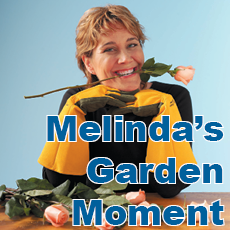
Melinda’s Garden Moments is heard Mon.-Fri. at 7:45 and 10:45 a.m. and 4:45 p.m. on WHAV.
You waited all season for that first red ripe tomato only to discover less-than-perfect fruit. But don’t worry, you can still have a great harvest and improve things for next season.
Blossom end rot is a common problem on the first set of fruit and often seen on container grown tomatoes. The black spot on the blossom end is due to a calcium deficiency. In most cases the soil has plenty of calcium, but the plants are unable to absorb it due to fluctuations in soil moisture.
Cracked fruit are also common in the garden. Fluctuating temperatures, moisture and improper fertilization result in irregular development of the fruit. The outer skin doesn’t grow and stretch with the changes and so it cracks.
Control both these disorders with proper care. Water thoroughly and less frequently to encourage deep roots. Mulch the soil to keep it evenly moist and reduce watering needs. Avoid root damage when staking and cultivating around plants.
A bit more information: Septoria leaf spot is a common fungal disease on tomatoes. It causes leaves to yellow and develop brown spots. The disease starts at the bottom of the plant with leaves dropping throughout the season. The fruit will be fine and edible, but the plant will look pretty ugly.
For more gardening tips, how-to videos, podcasts and more, visit www.melindamyers.com.

